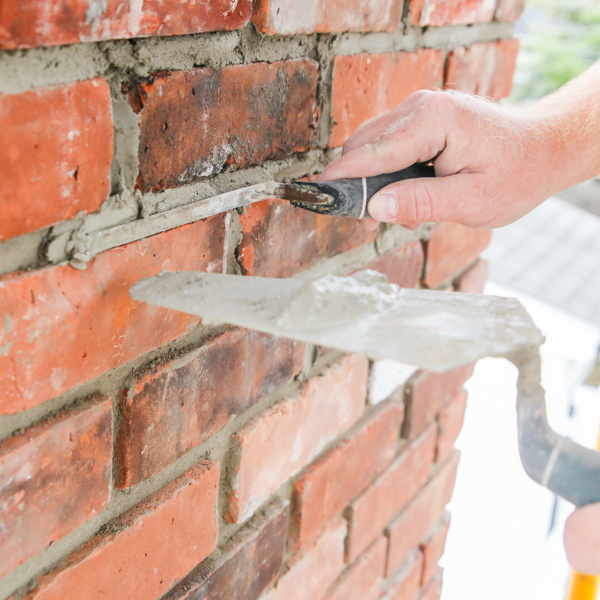Top-notch Roofing Contractor Services for Your Home
Top-notch Roofing Contractor Services for Your Home
Blog Article
Opening the Tricks of Sustainable Masonry Construction Practices for Eco-Friendly Structures
Amongst the myriad approaches to environment-friendly structure, sustainable masonry building and construction stands out as a reliable and durable approach that holds a wealth of untapped capacity. From the selection of materials to innovative construction techniques, the secrets to accomplishing sustainability within stonework building and construction are multifaceted and appealing.
Advantages of Lasting Masonry Construction
Welcoming lasting stonework building and construction methods not only lowers ecological impact but additionally offers lasting economic advantages to building contractors and neighborhoods. By using products like recycled bricks, blocks, and stones, home builders can dramatically decrease the carbon footprint of their tasks while promoting source efficiency. In addition, sustainable stonework building strategies, such as correct insulation and thermal mass buildings, can improve power efficiency within structures, leading to lowered operational costs with time.
Furthermore, the durability and durability of stonework structures add to long-lasting financial benefits. Buildings created using sustainable stonework techniques often require much less maintenance and repair service, converting to cost savings for building contractors and homeowner. The long life of masonry products also makes sure that frameworks continue to be stable and protected, minimizing the demand for constant remodellings or replacements.
Eco-Friendly Stonework Materials
Making use of environmentally friendly masonry materials is a crucial action in the direction of improving the sustainability of construction techniques and minimizing ecological effect while making best use of long-lasting economic benefits. Sustainable stonework materials are sourced, created, and made use of in a way that reduces general ecological impact. Sustainable concrete obstructs incorporate recycled aggregates and may include improved insulation residential or commercial properties, adding to power effectiveness in buildings.
In addition, all-natural materials like adobe, rammed earth, and straw bundles provide exceptional thermal mass properties, reducing the demand for home heating and cooling down energy. These materials are typically in your area readily available, advertising local economies and reducing transportation-related carbon exhausts. By selecting environment-friendly stonework products, construction tasks can significantly lower their ecological footprint and add to the production of much healthier, more sustainable built environments.
Energy-Efficient Masonry Techniques
Energy performance plays an important function in improving the sustainability of masonry construction practices. By implementing energy-efficient masonry methods, building contractors can dramatically lower the general energy consumption of a building, leading to lower operational costs and a smaller sized ecological footprint. One essential energy-efficient masonry strategy is using thermal mass, which involves incorporating thick materials like concrete or brick right into the structure's structure to absorb and save warm. This assists regulate indoor temperature levels, lowering the requirement for mechanical heating and cooling down systems.

Technologies in Sustainable Masonry
Recent advancements in sustainable stonework techniques have produced cutting-edge strategies that are improving the building and construction market. One such technology is the growth of self-healing concrete, which uses bacteria installed within the concrete to heal splits autonomously. This breakthrough not just minimizes maintenance prices however also enhances the sturdiness of stonework frameworks, adding to their sustainability.
An additional remarkable advancement is using recycled accumulations additional hints in masonry construction - masonry contractor. By integrating materials such as smashed ceramic waste or recycled glass into concrete mixes, contractors can lower the environmental impact of building jobs while preserving architectural stability. This technique not only draws away waste from garbage dumps yet also preserves natural deposits, making it a key innovation in sustainable stonework construction
Moreover, the assimilation of digital layout tools, such as Building Details Modeling (BIM), is transforming the method stonework structures are planned and created. BIM allows for more specific calculations, lowered material waste, and improved energy performance, ultimately resulting in even more lasting structure methods. These developments jointly represent a promising future for sustainable masonry construction in the age of environmentally friendly structures.
Future Trends in Stonework Sustainability
With the ingenious strides made in lasting stonework methods, the future patterns in masonry sustainability are poised to more revolutionize the building industry. One of the essential trends shaping the future of masonry sustainability is the increased combination of innovation. Improvements such as Structure Information Modeling (BIM) and virtual reality simulations are being utilized to maximize stonework building procedures, causing minimized material waste and improved power performance in structures.
Moreover, right here the growth of unique lasting materials is readied to play a significant duty in improving the eco-friendliness of masonry construction. masonry contractor. Technologies like self-healing concrete, recycled aggregates, and bio-based binders are acquiring grip for their capacity to reduce environmental influence while preserving architectural stability

Final Thought
Finally, lasting stonework construction practices provide various benefits for green structures. By utilizing environment-friendly products and energy-efficient methods, stonework can add to a much more sustainable developed environment. Innovations in lasting stonework are constantly being established to additionally improve the environmental performance of structures. Looking in the direction of the future, the trend of masonry sustainability is expected to expand, leading to even more eco-friendly and energy-efficient building practices in the years ahead.
Report this page